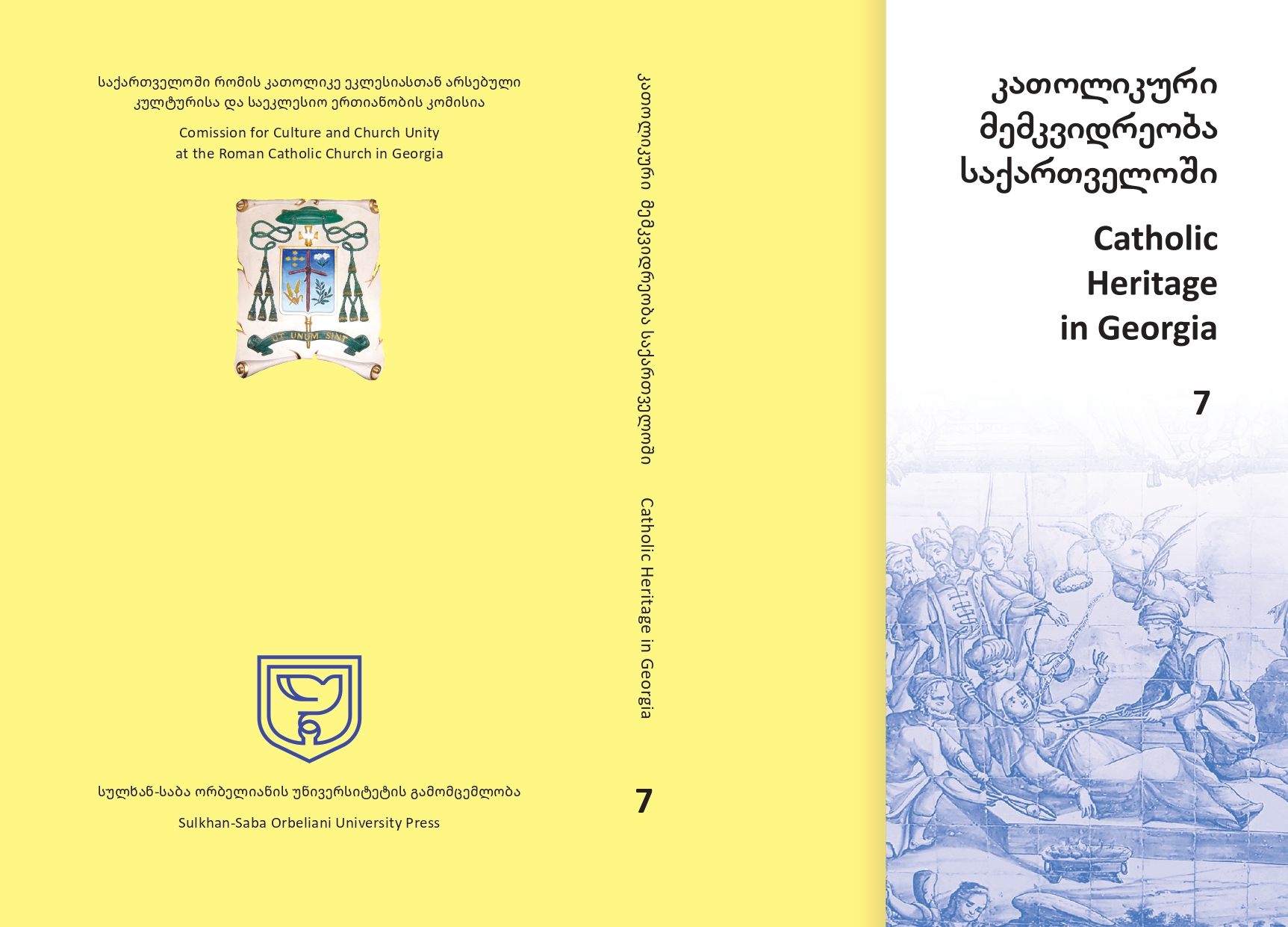Missionary report of Father Louis Grange, the first Jesuit in Georgia, sent to Claudio Aquaviva, General of the Order
DOI:
https://doi.org/10.52340/chg.2024.07.09Abstract
At the beginning of the 17th century, Georgia–Rome relations began to intensify, driven by political, economic, and religious factors. Major upheavals in both Western Europe and Georgia shaped the Vatican’s foreign policy, at the center of which stood the Society of Jesus (Jesuits). For Pope Urban VIII – an accomplished diplomat and realist politician – Georgia, particularly the Kartli-Kakheti region, was a significant factor in the Catholic missions’ Eastern strategy. Georgia was expected to become a stronghold for spreading Catholicism throughout the Caucasus and the Near East. For their part, Georgian kings and nobles hoped for support from Christian European states and the Pope of Rome in their struggle against Iran and the Ottoman Empire. One notable example is Nikifore Irbakhi’s embassy to European countries between 1625 and 1629. From this, we can infer that both sides had equal interest in mutual assistance and rapprochement. Economically, the goal of the anti-Ottoman coalition was to defeat the
Ottoman Empire and open Eastern countries to commercial capital. The Pope and Western leaders aimed to secure Eastern markets for Western capital and to discover new trade and transit routes. Georgian rulers also viewed their relations with Europe through an economic lens. Their vision included the restoration of the old “Silk Road,” which would connect Europe and Asia via Georgia.
From a religious perspective, missionary work was extremely valuable for Georgia, which was isolated in a Muslim-dominated region. These missionaries were the only representatives of the Christian world from the West. It should also be noted that it was largely through missionaries that Europe became acquainted with Georgia. Their reports were compiled with careful observation and strong knowledge of the region’s history, geography, and customs. While some inaccuracies existed, these were likely due to limited access to information. For this reason, the missionaries’ reports are considered primary historical sources.A notable example in this context is the missionary report by the first Jesuit father in Georgia, Louis Grange (Ludovico Grangerio), addressed to the
Jesuit Order’s General, Claudio Acquaviva. The report is dated March 2, 1615, and was written in Mokvi. It was published in Lyon in 1616. The report provides a detailed account of the difficult mission work undertaken by Grange and his companion, the coadjutor Etienne Vie, in Guria and Samegrelo. However, the report is especially important for its focus on issues related to apostolic
governance, posed in the form of eight questions for which Grange awaited answers from Rome: 1. If no other help is possible, should we accept the Orthodox rite? 2. If we do accept their rite, should we also adopt their monastic dress and way of life?
3. If Orthodox believers approach us for communion, should we allow the Franks to approach the Orthodox in return? 4. If Orthodox believers come to us for confession, should we explain the filioque to them or allow them to remain in their own beliefs? 5. Should we dissuade the Greeks from rebaptizing Armenians who have come to them, given that they doubt the Armenians were properly baptized in the name of the Holy Trinity? 6. Are Greek bishops who pay bribes to the Turks to be appointed guilty of simony? 7–8. What should be done with Latins who collaborate with the Turks? The content of this letter suggests that it outlines the strategy of the Jesuit Order. Cardinal Bellarmine in Rome responded negatively to Grange’s questions, saying: “It is impossible; if we, Latins, accept the Greek rite, we repeat the Greeks’ error, which holds the Latin rite to be incorrect.” In his correspondence with Rome, Louis Grange expressed bold ideas, such as conducting liturgy in Georgia without using the Latin rite. He requested permission from
the Pope to use local churches and monasteries for Mass while reserving the Latin rite for daily personal use. The Pope’s response was: “If the Jesuits change the rite, it will be said that we no longer wish to convince these people of the need to pass from
schism to unity, from falsehood to truth.” In his work Jesuits and Georgia, Vincenzo Poggi comments on this response from Rome, noting: “The issue posed by Father Grange is close to the modern Catholic concept, which does not prioritize one rite over another, as was believed during Bellarmine’s time.” Thus, through the above examples, I have attempted to analyze the plans and strategies of these intelligent and pragmatically minded Catholic missionaries. Were these parts of a unified strategy or merely attempts to
advance their own interests? Especially if we recall the successful strategy and tactics of the Jesuits in the New World – where they founded the state of Paraguay – or in Japan, where they founded the city of Nagasaki, or the achievements of Matteo Ricci in China, which were ultimately curtailed by policies like Bellarmine’s… It is also worth considering why the Jesuits ceased their mission in
Georgia and chose to step back, ceding space to other orders that played a much greater role in missionary work. Was there perhaps an invisible Jesuit hand still at work in the Caucasus in general? We hope that answers to these questions will gradually emerge through new research. In general, it can be said that the Jesuits have never completely severed their relationship with
Georgia. Among them, we can name Michel van Esbroeck, Mikel Aranzadi, and Vincenzo Poggi.








